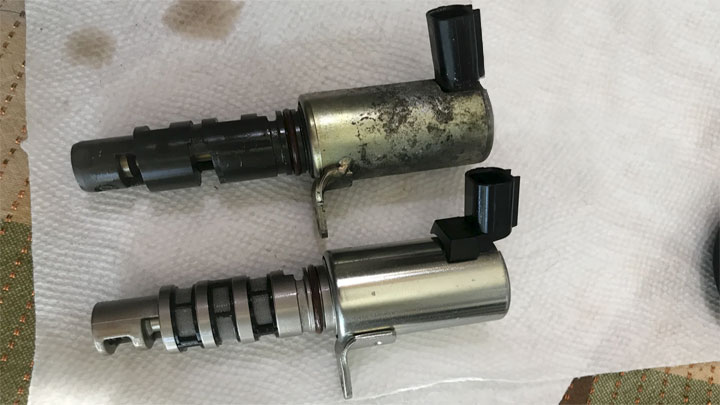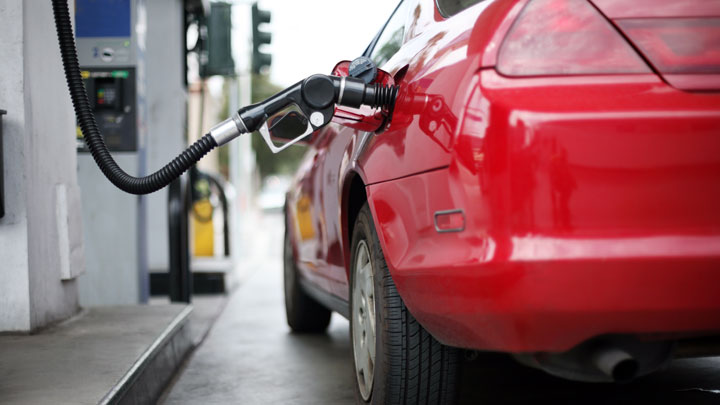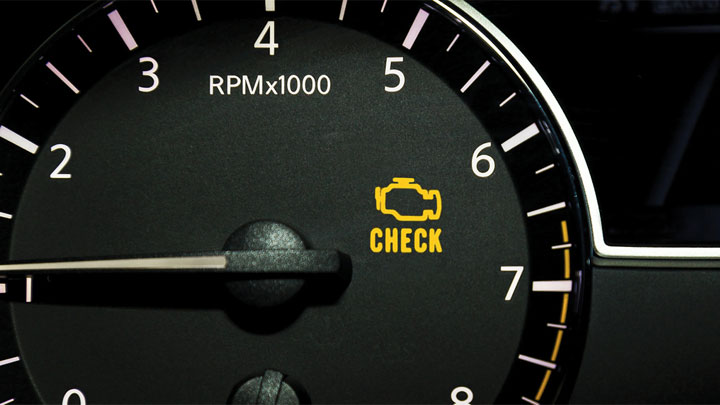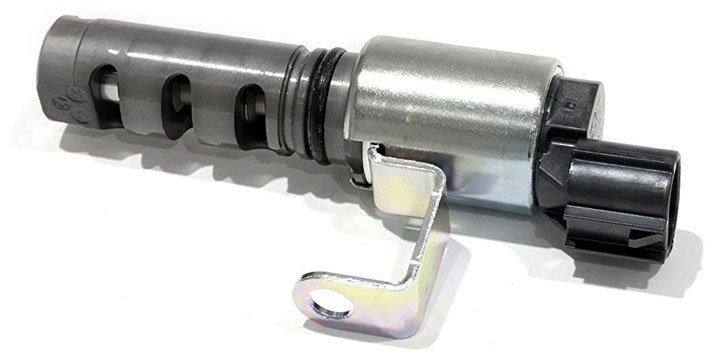What is Continuous Oil Flow Vct Piston Chamber Mean
Last Updated on November 2, 2021
To understand the variable valve timing (VVT) solenoid and associated oil control valve (OCV), it will help to know the history of this device and how it benefits our cars, SUVs and light trucks today.
The valves in the engine of your car, SUV or truck operate to control the flow of air, fuel and exhaust gases through the engine combustion chambers. These valves are pushed open and closed by camshafts.
Need help with a car problem RIGHT NOW?
to chat online with a verified mechanic who will answer your questions.
There may be as many as four camshafts depending on the engine type in your vehicle. These camshafts are typically chain or belt driven from the engine crankshaft.
The cams in vehicles of decades past provided a fixed pattern of valve operation with respect to the position of the pistons. This pattern (called valve timing) was pre-determined and designed into the engine by the manufacturer. Valve timing was set to to achieve the best performance while yielding acceptable fuel economy.
Variable Cam Timing
Then variable cam timing (VCT) came along. This concept introduced cam timing that varied around a predetermined pattern of valve operation.
Patents for such systems on early engines date as far back as the 1920s. Engineers reasoned that varying the valve operation as engine speed changes could offer both performance and fuel economy benefits.
Alfa Romeo was the first manufacturer to offer VCT on a production automobile. This feature came standard on the 2.0L fuel injected engine in the 1980 Spider. The design was very basic and provided intake valve retardation as engine speed increased.
The effect of this mechanism was to add mid-range power. This one change greatly benefitted this small Alfa engine.
Gradually, variable cam timing began to catch on. Honda incorporated this in their VTEC engines in 1989. Porsche introduced it with the VarioCam in the V8-powered 928 model. Variable cam timing also began to see wide acceptance in motorcycle engines in the early 2000s.
Borg Warner recently developed a VCT system for the 2016 Hyundai Lambda II engine series. This system incorporated the first use of a cam mid-position lock to hold the cams at a center setting when no advance or retard was required.
Today virtually all automobile builders have jumped on board the VCT train. And beyond just performance and fuel economy benefits, VCT has been found to help reduce vehicle emissions such as oxides of nitrogen.
What is an Oil Control Valve (and How Does It Work?)

In most modern automobiles engines, varying the valve timing is done by cam control mechanisms that alter cam position with respect to the engine crankshaft.
These systems utilize the readily available oil flow from the engine lubrication system to do the work. Here's how that happens:
You are stopped at an intersection or just cruising along and you step on the gas. Signaled by the ECU (electronic control unit), the variable valve timing solenoid opens its integral oil control valve. When this valve opens, oil under pressure flows to the cam control mechanism quickly changing cam position with respect to the driving chain or belt.
The cam position can be advanced or retarded depending on the engine speed and throttle (gas pedal) position. When the engine reaches a steady speed, the OCV closes and the cams return to their initial positions. This activity occurs almost instantly and is invisible to the driver.
There is a secondary benefit to this system. The OCV directs a continuous flow of oil to the timing chain and associated sprockets increasing lubrication and cooling oil flow to these parts.
See Also: Advantages of Variable Valve Timing (VVT)
Bad Oil Control Valve Symptoms
The VVT solenoid and OCV comprise an integrated unit. This unit can malfunction. When it does, any or all of these symptoms can alert you to problems:
#1 – Rough Idle

Under normal conditions, the VVT system activates at higher RPMs or when under load bearing conditions such as driving up a hill. But with a faulty oil control valve or VVT solenoid, excess engine oil may be introduced into the VVT system which can result in rough idling, stalling, or just poor engine running in general.
#2 – Poor Acceleration

The engine will accelerate more slowly than normal. Power to accelerate quickly and/or climb hills will be lacking. While you may think this isn't that big of a deal, there may be times where you need to floor it to prevent an accident. When that power isn't there, there's not much you can do.
#3 – Poor Gas Mileage

As already mentioned, one of the benefits of variable valve timing is an increase in fuel economy. But when the oil control valve is faulty, that benefit disappears as intake and exhaust valves may open or close at the incorrect times. Over a period of time, you will note an increase in fuel consumption.
#4 – Check Engine Light

Invariably, the check engine light (CEL) will come on. A code will be set by the onboard diagnostic system (OBD2). This code will indicate whether the problems you are noting are related to the OCV and its related VVT solenoid. DTC P0014 and DTC P0017 are two such codes related to VVT.
As with all CEL 'on' events the car may be driven for short distances but must soon be seen by a service technician for corrective action.
What Causes the VVT Solenoid and OCV to Go Bad?
The VVT solenoid is electrically powered as signaled by the ECU. Any fault in this system or circuitry can cause the VVT solenoid to fail to operate. Additionally the solenoid itself can have an internal electrical malfunction and begin to operate intermittently or not at all.
The OCV utilizes engine oil and requires clean oil to function normally. If oil and filter changes are not conducted periodically as your owner's manual dictates, sludge and/or varnishes (sticky deposits) may build up in this valve.
This contamination may slow or block its function. Also, though this valve is relatively simple, an internal mechanical failure can cause it to fail to operate.
Many OCV installations include an inline oil screen ahead of the valve oil inlet. This screen can become partially or completely blocked by dirt or sludge. This blockage can hinder flow to the OCV and could cause it to fail to operate.
Again, clean oil is important. Periodic engine oil and filter changes can help preclude this type of failure.
Can You Drive With a Faulty Oil Control Valve?
You can drive with this valve malfunctioning, but you shouldn't drive too far. Getting to your neighborhood repair shop or dealer as soon as possible is strongly recommended.
The reason why is that the OCV or oil screen may be partially or completely blocked. If this happens, lubrication to the cam sprockets and chains will slow or cease. This can lead to rapid cam sprocket and chain wear and then failure.
The resulting damage could be quite costly to repair.
VVT Solenoid Replacement Cost

VVT solenoid replacement will involve possibly a diagnostic fee, then labor and the cost of the parts as follows:
If your mechanic charges a diagnostic fee, it could range from $65 to $100. Average parts cost will likely be somewhere between $50 and $250. Labor for the VVT replacement could range from $75 to $200.
All together, you can expect to pay somewhere in the range of $210 to $550 for the entire job.
Evidence of contamination and sludge in the oil control valve or filter could require additional work. This would consist of flushing the engine lubrication system and replacing the engine oil and filter. Additional estimated cost for this work plus oil and a filter would be $125.
Source: https://cartreatments.com/bad-oil-control-valve-symptoms/
0 Response to "What is Continuous Oil Flow Vct Piston Chamber Mean"
Post a Comment